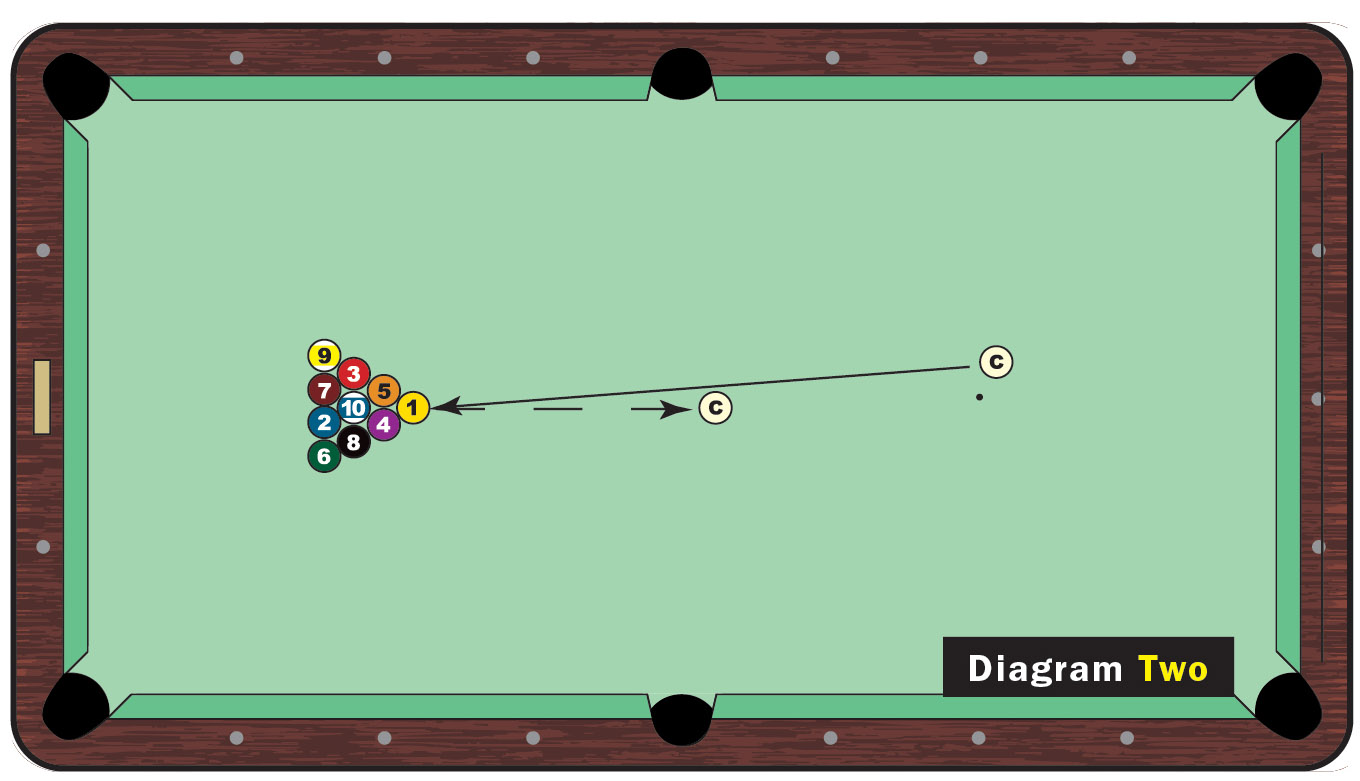When league season heats up, start by fine-tuning your break.
All players start the year enthusiastic and driven to have a great year. The year is long, though, and players tend to slog their way through the summer months and into the fall. But from September onwards, players tend to catch a second wind. We all want to finish the year playing at the top of our abilities.
For some reason, the last quarter of the year has always been my most successful. Because of all the big events, I really tend to focus.
The first thing I work on to prepare myself for the stretch run, of course, is my break. In all rotation games and 8-ball, the break is the most critical shot, so I will practice it everyday for at least 30 minutes. One of the benefits of devoting that much time and attention to the break is that it gets the pool muscle in my arm loose and locked in.
When practicing the 9-ball break, I usually break for five minutes from the rail on the left side of the table and five minutes from the rail on the right side of the table. Your goal is to hit the 1 head on and keep the cue ball in the middle of the table. Of course, you can get unlucky and have an object ball kick the cue ball to a rail, but you are always trying to keep the cue ball in the center of the table to give yourself the best chance of a shot on the first object ball.
With the 1 ball on the foot spot, I don’t want to put any spin on the cue ball. I do, however, want to cue a tip or two below center. Start with one tip below center and see how the cue ball responds. Make adjustments from there, always trying to park the cue ball around the center of the table.
In recent years, it has become popular to rack 9-ball with the 9 on the foot spot. That has a big impact on my approach to breaking. With the 9 on the spot, I usually practice the “cut break,” on which I hit the 1 slightly less full. The result is that the 1 ball goes to the side pocket and the cue ball comes off the side rail to the middle of the table (Diagram One). Hitting the 1 ball full with a lot of power is pointless when the 9 ball is racked on the foot spot. Your chances of making the 1 in the side or making the corner ball are almost impossible.
I find it best to hit around 4 o’clock on the cue ball. Of course, other factors come into play, like the age of the cloth and balls. If both are relatively new, hitting 4 o’clock on the cue ball should be sufficient if you are breaking from the right side. If you break from the left side, 8 o’clock on the cue ball will work. If the cloth and/or balls are older, simply move to 5 o’clock from the right side and 7 o’clock from the left side to add a little more draw to the cue ball. It is also important that you aim just off center of your line from the cue ball to the 1 ball. Aim slightly to the right and the spin will throw the cue ball a bit. That should result in the cue ball hitting the side rail near the diamond as shown. Keep practicing these break shots so that you instill the shot into your muscle memory.
After practicing this way for a while, I spend five minutes breaking with the cue ball a couple inches left of the center spot and five minutes breaking with the cue ball a few inches to the right of the center spot (Diagram Two). This is good preparation for 10-ball and 8-ball.







